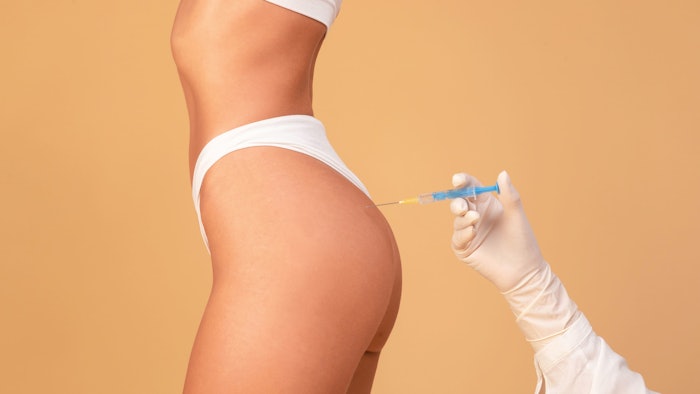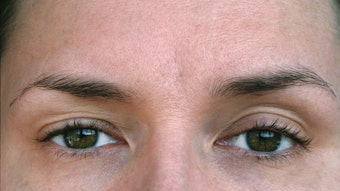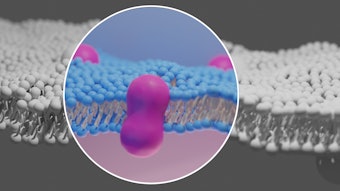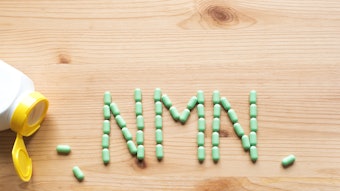
Fat has always been an intriguing but challenging futuristic filler for several reasons. In the past several years, it has gained increased interest from both patients and providers as a natural filler. Volume replacement through fat transfer is not a new option; it has been utilized for years in procedures such as Brazilian Butt Lifts, facial augmentation and now, breast augmentation. However, fat transfer procedures have always faced challenges, including the difficulty in effectively harvesting fat, the inability to store fat for later use and concerns regarding fat viability post-transfer. While fat transfer has found utility in certain scenarios, it has also posed challenges for widespread adoption as it is difficult and time consuming to use in the office setting. Patients that are part of the weight loss revolution may not have a significant amount of fat for transfer and the unpredictability has limited the precision placement.
Exciting advancements are on the horizon, particularly as many patients embark on their weight loss journeys and strive for a fit and fabulous lifestyle. Patients increasingly desire natural-looking results in their aesthetic transformations. Some of the promising developments in the field of futuristic fat transfer include fat banking, fat processing and methods to enhance fat take rates.
Fat Banking
1. Storing Fat for Future Fat Transfer/Filler Treatments
A company called Tissue Cell Technologies has been developing technology that allows fat to be stored for future use. The future holds the potential for us to bank the idea of performing liposuction, storing fat and using it at a later date. Imagine in the context of the weight loss revolution, being able to perform liposuction, store the fat and then use it for targeted, isolated fat transfers to areas of the body where it's most desired. This would make breast enhancement with fat transfer much more attractive, as serial fat transfer sessions can easily be performed to help patients achieve the results they desire. This could revolutionize how we sculpt and shape our bodies, allowing us to achieve the aesthetic appearance we dream of by placing fat where we want it and not where we don't. The fat could also be stored after a mommy makeover and then utilized for facial fillers, hand rejuvenation or any future aesthetic enhancements without the need for more liposuction. This process would simplify fat transfer surgeries, as it would involve one major liposuction session followed by having fat readily available for subsequent treatments.
Fat Processing
2. Cadaver Fat As a Filler
In the not-so-distant future, a company called Tiger Biomedical has developed the ability to utilize processed cadaver fat as a filler. While the concept of using processed fat as a filler isn't new, it has historically been limited to small quantities, posing challenges for substantial changes, especially in procedures like breast augmentation or body contouring. Tiger Biomedical has taken a unique approach by offering larger volumes of processed fat, with kits containing 15 to 30cc of fat available for patients. This advancement opens up a wide range of treatment options, from non-surgical Brazilian Butt Lifts to breast enhancements. This creates a unique opportunity for breast and body rejuvenation in a manner that we have never had previously. The concept of non-surgical butt and breast enhancements is not new, but we have had limited meaningful options. This innovation also presents the exciting possibility of improving the overall appearance post-liposuction, providing an off-the-shelf fat filler option. Many patients seek natural fillers and aesthetic improvements, making this development highly anticipated in the field.
Enhancing Quality & Survival of Fat
3. Precision Fat Processing
Enhancing the quality of the fat harvested is the next evolution in precision fat processing. There are a couple of advancements on the horizon, with some that have already arrived. One such process is called Viality, an innovation in fat processing. This Precision Fat Processing System has demonstrates in studies that it can yield fat take rates of up to 80%. The key benefit is precision: ensuring that patients receive the purest fat possible, which leads to more predictable results and improved outcomes. This addresses a historical challenge where fat take rates varied significantly. Viality achieves this by separating oils and fluids, ensuring that only the best quality fat is injected. This gives providers an unparalleled ability to sculpt and shape effectively, providing optimal results and predictability for patients.
4. Enhanced Fat Survival During Transfer
The combination of radiofrequency energy and helium plasma is another exciting treatment option. Historically, this technology has been used for skin tightening, but recent findings show promising improvements in skin quality through the combined use of radiofrequency energy and helium, which generates inert plasma, previously earning it the nickname J-Plasma. Animal studies have suggested that this plasma can enhance fat survival when combined with fat transfer. While human trials are still pending, the potential for improved fat survival and precision in fat processing is highly anticipated.
5. Regenerative Potential of Fat Cells
LipoCube is an exciting advancement in fat processing. The concept revolves around transforming standard liposuction fat into microparticles, including micro and nano fat. We're only beginning to explore its potential beyond mere filler applications in various aspects of aesthetic medicine. The regenerative properties of fat are continuously evolving, with LipoCube aiming to convert large fat globules into smaller micro and nanoparticles. These particles can be utilized for skin rejuvenation and other regenerative purposes. The beauty of LipoCube lies in its ability to simplify the liposuction process while offering customizable particle sizes for different aesthetic procedures. This opens up unprecedented possibilities for facial rejuvenation and holds promise for the future of regenerative medicine, tapping into the regenerative potential of fat cells. We're just scratching the surface of what this technology can offer.
The Era of Futuristic Fat Treatments
The era of futuristic fat treatments is upon us, with advancements both currently available and forthcoming. With the rise of the weight loss revolution and patients seeking natural augmentations, such as breast or buttock enhancements, as well as facial fillers, fat remains an intriguing but often mythical option for patients and providers. Its natural feel, longevity and compatibility with one's own body tissue make it highly desirable. The ability to store or enhance fat transfer processes brings immense excitement for patients and providers alike.
The future appears bright in the realm of fat treatments, with numerous exciting developments contributing to the overall shift in plastic surgery towards natural augmentation.












